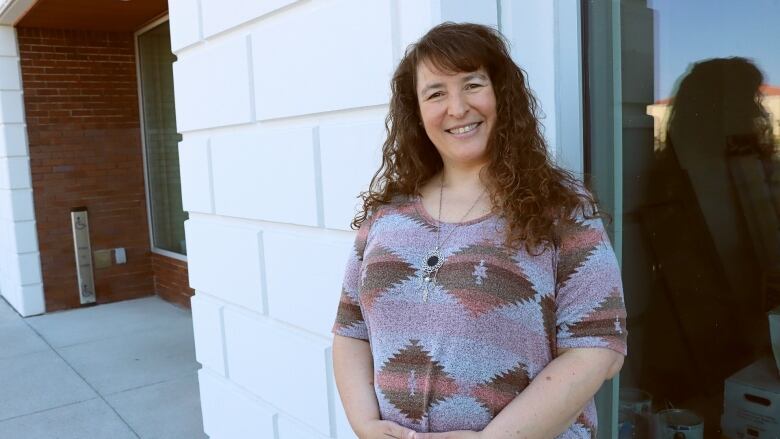Mi'kmaw alert system helps find people missing from Indigenous Cape Breton communities
Former first responder developed system that now serves 4,000 people

This story is part of a series from CBC's Eskasoni Community Bureau. This series comes from weeks of conversations with community members about what they feel is important to see, hear and read on CBC's platforms.
Jennifer Jesty will never forget the first emergency alert she sent abouta missing girl in Cape Breton.
The developer of a Mi'kmaw-led system for five First Nations in Cape Breton said the program wasn't fully launched when police reached out looking for help.
"I typed out the alert, and I hit send, and then I just paced the floor," said Jesty.
"It was about 45 minutes later, [that police] called back and said, 'Jennifer, how did you do that? She is home and safe with her family. You were able to do in 45 minutes what we couldn't do in 24 hours.'"
Jesty, a former paramedic and firefighter, developed theUnama'ki Alert System through her role as emergency resilience manager with the Union of Nova Scotia Mi'kmaq.
Reunited with families
There have been 107 alerts sent to peoplein the communities ofMembertou, Eskasoni, Potlotek, Wagmatcook and We'koqma'q since the program launched in September 2020.
Jesty said that among the alerts, 37 involved children and young adults who were reunited with their familiesafter beingreported missing or wandering off. Additional alerts were for things such asboil water orders, shootings, car crashes, traffic congestion and warnings about suspects looking torecruityoung Indigenous women into thesex trade.

Prior to the system's launch, Cape Breton's Mi'kmaw communities were relianton police and other agencies forcommunicating with residentsat a time of crisis. Now,more than 4,000 people havesigned up for the Unama'ki Alert System andreceivemessagesvia cellphone, home phone or email.
The messages arein both English and Mi'kmaq.
Jesty said shecreated the system inpartnership with a software company known as Everbridge. The Unama'ki alert program isnow funded by Indigenous Services Canada.
"I'm so proud of the system and I'm so honoured that we've come this far," said Jesty.
"It gets to the point now that if there's something going on in a community residents are very quick to take to social media and say, 'Well,where's the alerts?' People are expecting and asking for it."
Protocols created with local chiefs
Jesty said that protocols, criteria and proper wording foralerts were created in partnership with the five First Nation chiefs in Cape Breton, who are also responsible for sending them out.
Leroy Denny, chief of Eskasoni,said the system workers faster and more efficiently, which is important when people are in need.
"Nowadays, especially with [the Missing and Murdered Indigenous Women and Girls] movement, you know, we don't take it lightly," said Denny. "We send it out right away. And the community, they respond to the police right away. And so it's a really great communication tool."
Denny said most of thealerts sent out in Eskasoni are for missing people.

Jesty said one thing she learned as a first responder isthat every second counts.
Jesty recently offered her expertise to officials atNova Scotia's Mass Casualty Commission, telling them that rather than being viewed as intrusive, alerts can be provided through a system where people are required to opt-in.
"I just wanted them to know that there is another way there are other alternatives," she said.
"When you're trying to convey very serious information that has an imminent threat to life and safety it's pretty important to get that information out quickly, where there is not going to be a lot of red tape or bureaucracy involved."
Jestywould love to see thealert system expanded toother Indigenous communitiesand allcommunities across the country.
MORE TOP STORIES













_(720p).jpg)


 OFFICIAL HD MUSIC VIDEO.jpg)
.jpg)



























































































